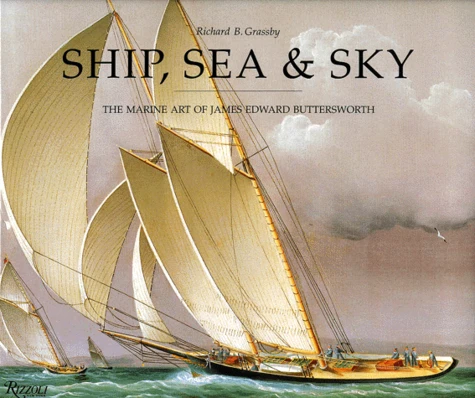Ship, Sea & Sky. The Marine Art Of James Edward Buttersworth
Par :Formats :
Définitivement indisponible
Cet article ne peut plus être commandé sur notre site (ouvrage épuisé ou plus commercialisé). Il se peut néanmoins que l'éditeur imprime une nouvelle édition de cet ouvrage à l'avenir. Nous vous invitons donc à revenir périodiquement sur notre site.
- Nombre de pages128
- PrésentationRelié
- Poids0.87 kg
- Dimensions26,1 cm × 23,6 cm × 1,7 cm
- ISBN0-8478-1805-5
- EAN9780847818051
- Date de parution31/01/2000
- ÉditeurRizzoli International
Résumé
In the annals of marine painting, few artists are more highly regarded than James Edward Buttersworth, who painted in New York City during the mid-nineteenth century-the great era of maritime commerce. His career stretched from the age of sail to the advent of steam, and his paintings include extraordinary naval battle scenes as well as the evolution of the America's Cup. Today his work is featured in many major American art museum as well as in private collections.
James Edward Buttersworth was among the best at recording with meticulous draftsmanship and sensitive modeling the nineteenth-century clipper ship. To many, these ships were the most beautiful sailing vessels ever built and fulfilled Horatio Greenough's ideal that an art form should be a promise of its function. Although Buttersworth's understanding of rigging and the setting of sails under way is unrivaled, it is his use of light and animation that separated his work from other marine painters. While the grace and beauty of the clipper ship has always offered a special challenge to marine artists, Buttersworth managed to combine the excitement, movement, and atmosphere of a ship at sea with the veracity of a ship portraitist.
Buttersworth's ships were not intruders on the seas, but impressive symbols of the ability of man to control and harness the forces of nature. The sea was as important as the wilderness in promoting an expansionist ideology. But with the decline of maritime power the interest in marine painting waned. Fortunately today this important work is being reexamined in the context of other nineteenth-century American artists whose works exemplify the progress, destiny, and conquest of nature.
The extensive text by Richard Grassby offers a biography of Buttersworth and a survey of his paintings and maritime environment art. It is accompanied by 52 full-color illustrations, bringing together many of the works dispersed among private collections.
The South Street Seaport Museum occupies 11 square blocks and is made up of exhibition galleries, historic ships (one of the world's largest fleets), restored nineteenth-century buildings, a working nineteenth-century print shop, and other attractions. The Museum's purpose is to preserve, interpret, and display the history of New York as a world port. The Seaport attracts hundreds of thousands of visitors from around the world each year.
In the annals of marine painting, few artists are more highly regarded than James Edward Buttersworth, who painted in New York City during the mid-nineteenth century-the great era of maritime commerce. His career stretched from the age of sail to the advent of steam, and his paintings include extraordinary naval battle scenes as well as the evolution of the America's Cup. Today his work is featured in many major American art museum as well as in private collections.
James Edward Buttersworth was among the best at recording with meticulous draftsmanship and sensitive modeling the nineteenth-century clipper ship. To many, these ships were the most beautiful sailing vessels ever built and fulfilled Horatio Greenough's ideal that an art form should be a promise of its function. Although Buttersworth's understanding of rigging and the setting of sails under way is unrivaled, it is his use of light and animation that separated his work from other marine painters. While the grace and beauty of the clipper ship has always offered a special challenge to marine artists, Buttersworth managed to combine the excitement, movement, and atmosphere of a ship at sea with the veracity of a ship portraitist.
Buttersworth's ships were not intruders on the seas, but impressive symbols of the ability of man to control and harness the forces of nature. The sea was as important as the wilderness in promoting an expansionist ideology. But with the decline of maritime power the interest in marine painting waned. Fortunately today this important work is being reexamined in the context of other nineteenth-century American artists whose works exemplify the progress, destiny, and conquest of nature.
The extensive text by Richard Grassby offers a biography of Buttersworth and a survey of his paintings and maritime environment art. It is accompanied by 52 full-color illustrations, bringing together many of the works dispersed among private collections.
The South Street Seaport Museum occupies 11 square blocks and is made up of exhibition galleries, historic ships (one of the world's largest fleets), restored nineteenth-century buildings, a working nineteenth-century print shop, and other attractions. The Museum's purpose is to preserve, interpret, and display the history of New York as a world port. The Seaport attracts hundreds of thousands of visitors from around the world each year.

